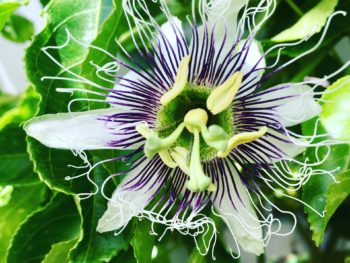An Easy Flower
Every experienced gardener knows that nasturtium is a must-have in our desert gardens. It is a wonderful companion for the vegetable garden and for the beginner, there really isn’t anything easier to grow. In gorgeous colors of vibrant reds, oranges, and yellows and even a little pink, this dependable beauty lends confidence to the new gardener as it sprawls and tumbles through the garden. If you are just starting to garden in Arizona, or have not gardened here, it may seem strange that we are talking about nasturtiums in fall. However, right now is the perfect time to plant nasturtiums and other flowers for spring color. They overwinter and in spring will burst into bloom. Planting now ensures that the plants can reach the flowering stage before they succumb to the heat of May.
Nose Twister
Nasturtium is not just a pretty face, it also has an abundance of uses for the gardener.
During the Victorian Era, when scurvy was a grave concern, nasturtium was used for its high vitamin C content and its antibacterial properties. The Latin binomial for nasturtium is Tropaeolum majus, and the common name nasturtium literally means nose tweaker or nose twister! Native to South and Central America, it was known as Indian cress because of the peppery oil it releases similar to cress. These peppery oils are also the cause of twitching noses, hence the name “nose twister.”

The leaves, flowers, and seeds are all edible. The flowers add a wonderful color to salads, sandwiches and spreads, the leaves, a peppery bite to liven up dishes. Using the seed pods are my favorite. The plant forms berry-like pods that can be pickled much the same as capers. I simply rinse them off, make a quick pickling vinegar with a bay leaf, cup of vinegar and 1 tablespoon of sugar, and half a teaspoon of salt. I pour the hot liquid over the pods and seal a sterilized jar and let it cool. Easy Peasy! I have also added the flowers to plates of hummus and vegetables for an instant wow factor or added it to herby mayonnaise for some peppery flavor and a pop of color. Let’s not forget nasturtium butter as it gloriously melts into a piece of fish or roasted vegetables and subtly infuses the dish with its flavor.
For Health and Healing
Nasturtium’s high vitamin C content makes it a great ally when nursing colds and flu’s and even boosts the immune system. It promotes the formation of red blood cells, stimulates hair growth and can be used for respiratory infections. It is a powerful antibacterial and can be used to heal wounds and reduce inflammation.
Easy Growing
Growing nasturtium in the Southwest Desert is really easy. They will die out once our temperatures start to soar, so getting an early start is the trick. They are best sown about half-inch deep in October, with the anticipation of cheery blooms the coming spring. I like to direct sow them, but they can also be started in early December indoors and transplanted outside in early February. They like poor soils, so no need for fertilizers.
Nasturtiums are great for in-ground planting or containers and raised beds. They come in both trailing and bushing varieties and an assortment of colors. As a companion plant, they do great with the brassica family, squash, cucumber, tomatoes, and potatoes and are an excellent trap crop for aphids.












 Garden of the Month: September 2019
Garden of the Month: September 2019